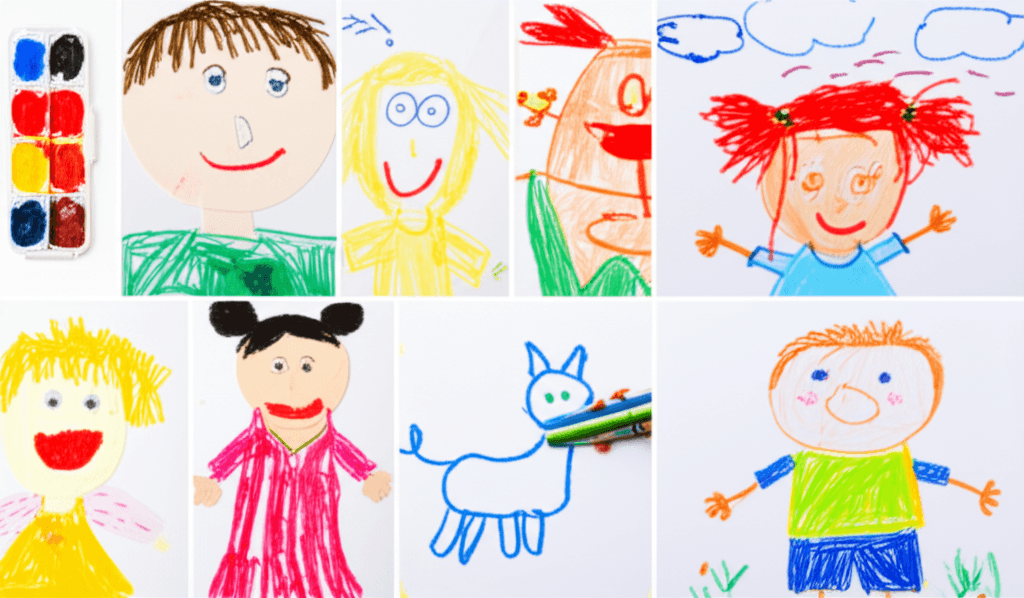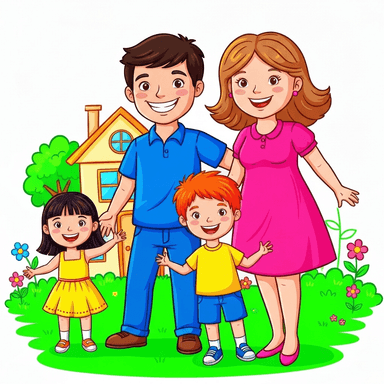Week 2: My Family
Weekly Focus
Children explore their family relationships, roles, and traditions while learning how families care for each other and help meet basic needs.

Week at a Glance
Daily themes for Week 2
- MondayWho Is In My Family?
- TuesdayFamily Roles and Responsibilities
- WednesdayFamily Traditions
- ThursdayFamily Stories
- FridayFamilies Help Each Other
Teacher Tip
Learning Objectives
- Identify and name family members
- Understand different family roles and responsibilities
- Recognize how families care for each other
- Appreciate family traditions and stories
- Practice counting family members (numbers 1-10)
- Develop vocabulary related to family relationships
Key Vocabulary
Materials Needed
- Family photos from home
- Chart paper and markers
- Art supplies (crayons, paper, scissors, glue)
- Books about families
- Finger puppets or family dolls
- Camera for documentation
- Magazines for family pictures
- Construction paper for family trees
Daily Plans
Monday: Who Is In My Family?
Focus Question
Who are the people in my family?
Suggested Books
- "Families Are Different and Alike" by Bobbie Kalman
- "The Family Book" by Todd Parr
- "So Much" by Trish Cooke
Morning Circle
Introduce the family theme by reading "So Much" by Trish Cooke. Discuss different family members and how families can be different sizes and structures.
Teacher Tip: Be inclusive of all family types - single parents, grandparents as caregivers, adoptive families, etc. Emphasize that love makes a family.
Literacy Activity
Family vocabulary development. Learn words for family members in English and encourage children to share family words in their home languages. Create finger puppets for family members.
Math Activity
Count family members. Children count how many people are in their families and compare family sizes. Create a class graph showing different family sizes.
Extension: Use terms like "more than," "less than," and "equal to" when comparing family sizes. Practice number recognition 1-10.
Art Activity
Family portrait drawing. Children draw pictures of their families, including all the people who live with them or are important to them. Encourage details and storytelling.


Closing Circle
Share family drawings and discuss the different types of families represented in the classroom. Sing a family song that celebrates diversity.
Reflection Questions:
- Who are the special people in your family?
- What makes your family special?
- How are families the same and different?
Featured Activities
Family Tree Creation
Children create visual family trees showing their family members and relationships, celebrating diverse family structures.
Family Traditions Show & Tell
Interactive presentation where children share their family's special traditions, foods, and celebrations with the class.
Family Helper Chart
Collaborative chart-making activity where children identify and organize different ways family members help each other at home.
Family Story Book
Children create personalized books featuring their family stories, memories, and special moments through drawings and dictated text.
Resources
Books
- • "So Much" by Trish Cooke
- • "The Family Book" by Todd Parr
- • "Oonga Boonga" by Frieda Wishinsky
- • "Love You Forever" by Robert Munsch
- • "Families Are Different and Alike" by Bobbie Kalman
- • "Tell Me Again About the Night I Was Born" by Jamie Lee Curtis
- • "The Relatives Came" by Cynthia Rylant
- • "Family Pictures" by Carmen Lomas Garza
Printables
- • Family tree templates
- • Family member vocabulary cards
- • "I Can Help" coupon book template
- • Family traditions worksheet
- • Family story book pages
- • Family helper chart template
- • Family counting worksheets
- • Family photo frames
Home Connection
- • Family interview questions
- • Family tradition sharing guide
- • Family photo collection tips
- • Home helper activities
- • Family story prompts
- • Weekend family activities
- • Family vocabulary practice
- • Cultural celebration ideas
Assessment Strategies
Family Drawings
Collect and analyze children's family drawings to assess understanding of family structures.
Vocabulary Assessment
Document children's use of family-related vocabulary during discussions and activities.
Story Retelling
Observe children's ability to sequence and retell family stories using appropriate vocabulary.
Counting Skills
Assess children's ability to count family members and compare family sizes using math vocabulary.
Social Understanding
Document children's understanding of family roles, responsibilities, and caring behaviors.
Home Connection
Family Engagement Ideas
Send home activities that encourage families to share their stories and traditions:
- Create a family photo album together
- Share stories about family traditions and celebrations
- Cook a special family recipe together
- Interview grandparents or older family members
- Practice family helper activities at home
Cultural Sensitivity
- Celebrate all types of family structures
- Include diverse cultural traditions and celebrations
- Provide materials in multiple languages when possible
- Be sensitive to children who may not have traditional family photos
- Focus on love and care rather than family structure
